As an Amazon Associate I earn from qualifying purchases.
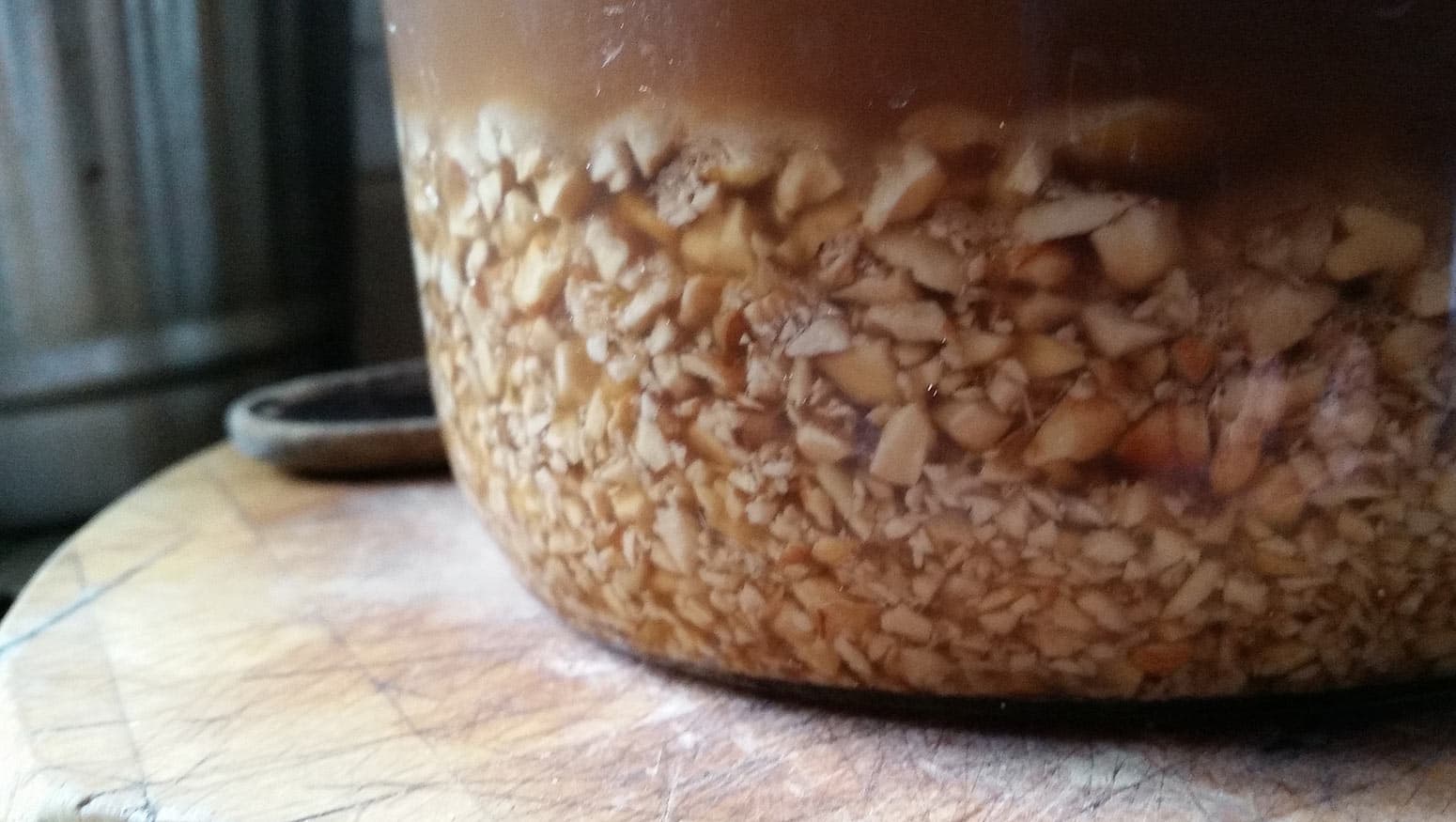
Normally when I work with acorns I make acorn flour. But sometimes I want to eat acorns in a different way, so I make acorn grits.
Acorn grits are basically what you think they are: Small bits of acorn that have been leached of their bitter tannins.
Why bother? Well, you get more of an acorn texture and flavor when making grits, and you can use them in a whole different set of acorn recipes. Acorn muffins with some grits in them, or acorn soup, or you can add the grits into stews, or mix into bread, or, well, cook into a breakfast cereal a little like corn grits, although they won’t dissolve.
The texture is a bit like cooked chestnut, so if you have chestnut recipes you like, you can sub these in. Any variety of acorn will work. Some will take longer to leach than others. Here is a primer on the mechanics of eating acorns.
How do you make acorn grits? Here’s how:
Start with acorns. Duh. As I said, any variety works, and you can use fresh or dried ones. I used dried tanoak acorns in this case.
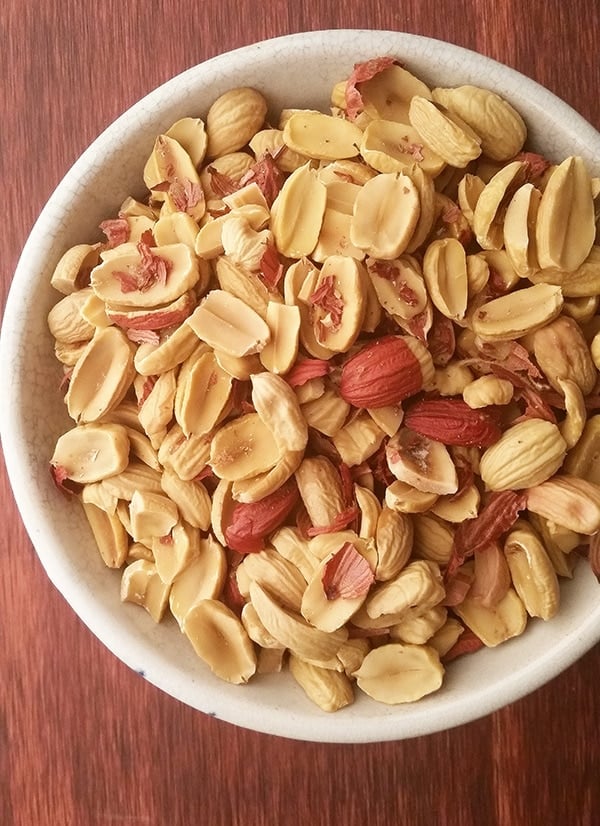
You want to remove the papery “test,” the skin on the nut, as best you can, but a few skins won’t matter. I find the skins come off easier if you freeze the acorns first, or if you use dried acorns. Or do both.
You then need to grind your acorns into bits. You want them small, but not meal or flour. Too large and they won’t leach correctly. Too small and you basically have flour, and that’s a different product. If you use dried acorns, you will need to soak them in water overnight before grinding. I use a food processor to grind.
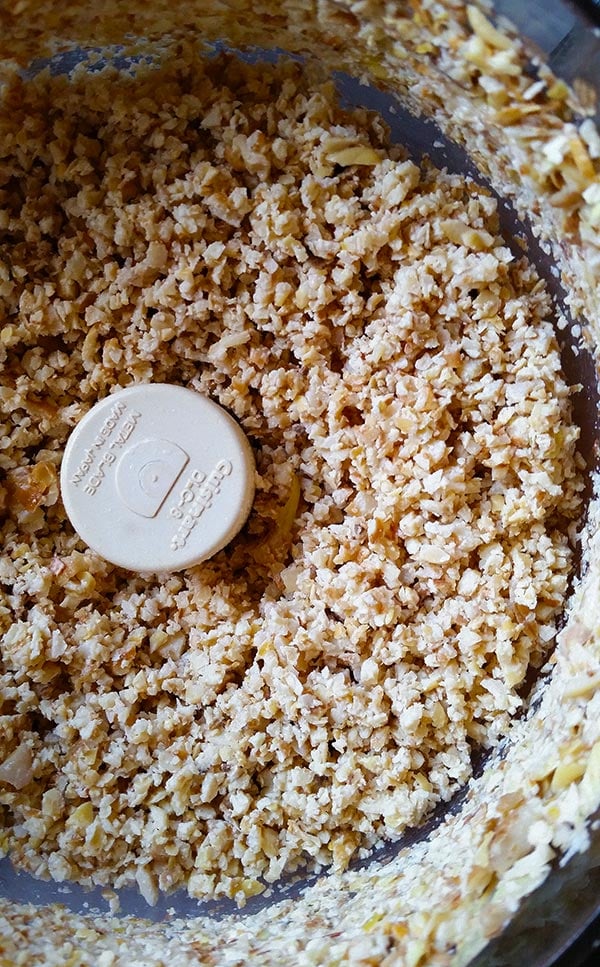
Remember that your grits are still super bitter with all those tannins. Fortunately tannins are water-soluble. So you put your grits in a big jar or other container and cover them with cool water. Shake and let things settle. Pour off the water once or twice a day until the grits lose their bitterness.
How long? A few days for white oak acorns, or Valley or cork oaks. A couple weeks for red oak acorns, and somewhere in between for other varieties. My tanoak acorns took about eight days.
You can speed this process along with a neat trick that I like a lot: Add lye to the water.
Wha? Yeah, lye. You can either use a little Red Devil lye (make certain the label says 100% lye) or, do as I do and buy food grade lye online. You add a tablespoon to 1 gallon of cool water and gently stir it into the grits. It’s super cool — the lye reacts with the tannins almost instantly and turns the water the color of dark chocolate.
Leave this in the fridge overnight, then pour off the lye water; it’s quite safe, and will feel a little soapy. You then add new water and keep changing this, a couple times a day, until the water is mostly clear. Normally this takes about 3 days.
Why bother with the lye? Well, it will soften your acorn grits to the point where they are easy to eat in baked goods. And they will not be bitter in the slightest.
You store your acorn grits in one of two ways. I like them ready-to-eat, so I keep them in a Mason jar of water in the fridge. They will last this way indefinitely. Or you can dry them and keep your acorn grits in the pantry.
Acorn Grits
Ingredients
- 3 pounds acorns in the shell, any kind
- 1 tablespoon food grade lye (optional)
Instructions
- Shell your acorns and remove the papery "test," the skin on the nuts. If you're using dried acorns, soak them in water overnight. Once the acorns are soft(ish), i.e., soaked overnight or fresh, grind in a food processor or meat grinder until they are the consistency of stone ground corn or even a bit larger.
- Move the acorn grits to a large container and cover with water. Keep cool. Change the water once or twice a day for at least five days. Taste the grits for bitterness. They are done when they are not bitter.
- If you want to do the lye treatment, add the tablespoon of lye when the acorn grits have lost most of their bitterness, anywhere from five to 10 days after you started leaching them. Stir in the lye and keep everything cool. Let the acorn grits sit in the lye water 12 hours or so.
- To remove the lye from the water, pour out the lye water, then refill the container. Repeat this a few times a day until the water is mostly clear, about 3 days.
- Store the grits in a jar of water in the fridge, or dry them. Dried, they will last indefinitely.
Notes
Nutrition information is automatically calculated, so should only be used as an approximation.
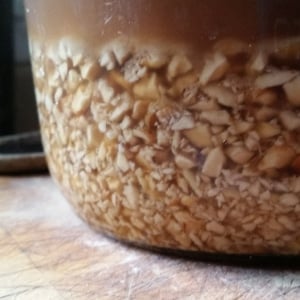

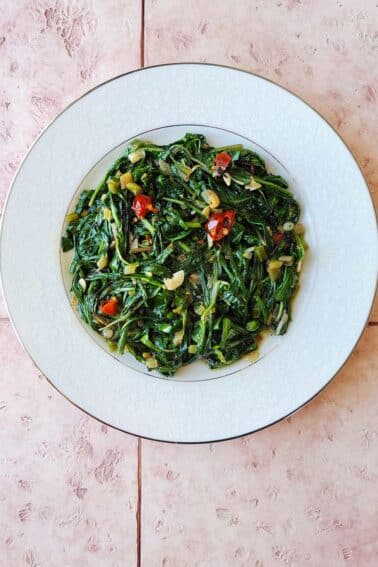

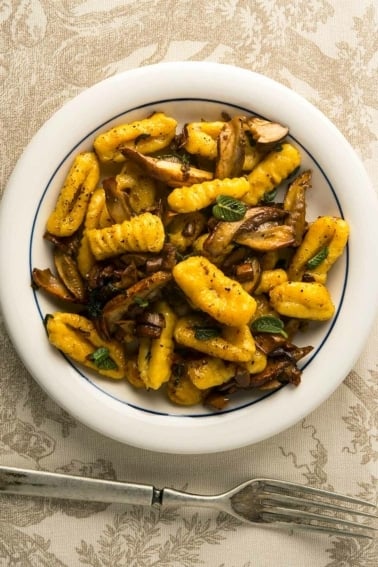
Thanks for the info; I worked with acorns before, but it’s very helpful to get information from somebody more experienced.
The lye treatment was new to me, but it didn’t much surprise me; I made hominy before.
There were some interesting questions on the effect of the lye treatment, so I pulled up ecosia and looked around. And lo and behold, there’s a thesis work on Acorns in Human Subsistence! Author: one Sarah L.R.Mason, phd in archeolgy. (Not sure if links are allowed here, but if you’re interested, throw name & title into a search engine and you should find it.)
What I found so far:
lye treatment is part of removing the tannins, seems to make niacin more available and also add calcium to the nutritional values of the acorns.
Btw, if like me you don’t have a fireplace, you can get lye out of heating some egg shells in the oven, smashing them up fine (easy, they get more fragile) and then using them the same way you’d use wood ash.
Thanks for sharing this info! I’m doing research right now on leaching methods and I’m curious how using lye affects the cooking properties of the acorns. I’ve read that hot-leached acorns aren’t so great for baking, since they lose their sticky quality, but cold leaching can take quite a while. Do lye-leached acorns retain the stickiness of cold leaching? Have you noticed any differences or similarities to other methods in how they behave when baked? Cheers!
when you refer to “food grade lye” – are you referring to calcium hydroxide that we use to make corn hominy, or sodium hydroxide that we use to dip pretzels?
Tyler: Lye is sodium hydroxide.
Lye can also be potassium hydroxide and you can make it yourself by leaching hard wood ash.
I’m trying acorn grits with California black oak acorns. I’ve cold leached them for 2 weeks and they’re still bitter – I’m worried I just didn’t grind them small enough. When you say “not too big,” what do you mean? I went for 1/16-1/8″ in diameter for the majority of chunks.
Sophie: Keep at it. It can take a while, and black oaks are fairly tannic.
I can testify that acorn muffins are one of the tastiest foraged delicacies I have EVER put in mah mouth! And those little bits in maple tree seed spinners taste like Edamame…just smaller.
When I was learning how to make hominy, I used to make lye from wood ashes. Leaching the lye out of the wood ashes also makes the wood ashes much safer to use for agricultural purposes.
Another great article. Since I’m gluten sensitive, I have decided to eliminate wheat flour from my diet. I was going to buy some nut flours online, but I was wondering if I could make flour from the acorns? Have you ever made any?
After chopping and leaching the acorns, I’m assuming that I would let the chopped acorns completely dry in an oven, and then, grind to a fine powder. What do you think?
Jdode: There is a link to my acorn flour method in this post.